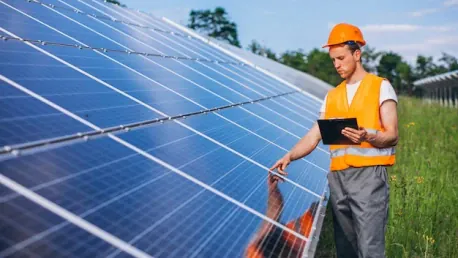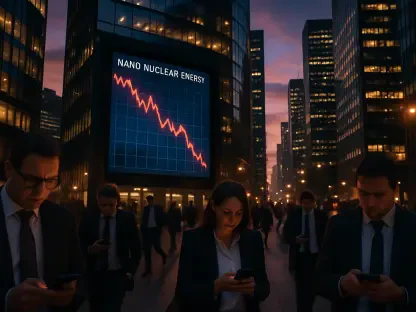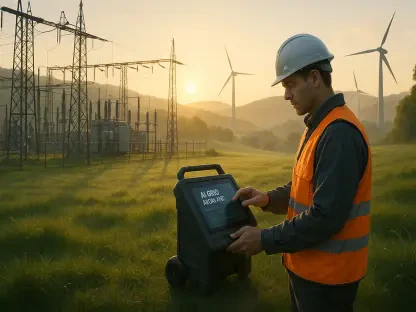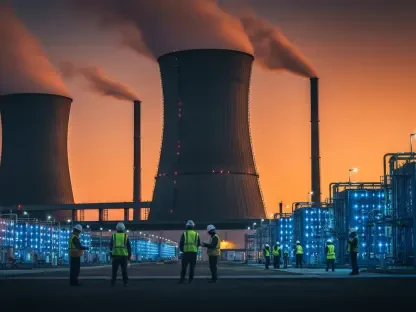The global push towards clean energy has seen tremendous strides, especially in recent years. The world is witnessing a proliferation of renewable energy systems ranging from sprawling solar farms to towering wind turbines. Yet, this remarkable growth in clean energy is consistently overshadowed by a concurrent rise in global electricity demand. As the need for power intensifies, there are mounting challenges in effectively reducing overall carbon emissions. This complex dynamic underscores the pressing question of whether the rapid advancement in clean energy can genuinely keep pace with the burgeoning global electricity demands.
Unprecedented Surge in Clean Energy Installations
The clean energy sector achieved significant milestones in 2024, with the International Energy Agency (IEA) reporting an unprecedented addition of over 700 gigawatts of renewable energy capacity. This remarkable surge encompasses significant contributions from solar panels, wind farms, and other green technologies, transforming the global energy landscape. Of particular note, solar power installations reached an impressive 553 gigawatts globally, showcasing a sustained upward trajectory that has continued to exceed industry forecasts. These advancements not only illustrate the commitment to renewable energy but also highlight the efficacy of innovative technologies in driving this growth.
The expansion in clean energy capacity is further bolstered by a diversification of energy sources. In 2024, renewable resources were responsible for generating 32% of the world’s electricity, closing in on coal’s 35% share. When combined with nuclear power, carbon-free sources accounted for over 40% of the global electricity supply—a historic high. This diversification underscores a significant shift in the energy portfolio, reflecting an increased reliance on sustainable, carbon-free resources. Such progress suggests that while the path to greener energy is fraught with challenges, it is also marked by notable achievements.
The Power Demand Paradox
Despite the strides made in clean energy, the sector is grappling with an equally imposing rise in global electricity demand. Data from the past year reveal that global power consumption grew by 4.3%, driven by multiple factors such as burgeoning industrial activities and the ever-increasing need for climate control solutions like air conditioning. The reality that heatwaves are becoming increasingly frequent due to fossil fuel emissions further exacerbates the demand for electricity, particularly for cooling indoor environments. This increasing power consumption presents a paradox: even as renewable energy sources occupy a more substantial share of the energy mix, overall electricity demand continues to soar.
The paradoxical scenario results in a complex interplay where the benefits of renewable energy are somewhat mitigated by the surge in power consumption. Consequently, power plants find themselves compelled to use slightly more coal, gas, and oil compared to previous years, thereby diluting the potential emission reductions promised by renewable energy. This underscores a critical issue: while the adoption of clean energy is essential, efforts to curtail power consumption and enhance energy efficiency are equally crucial to achieving significant reductions in carbon emissions.
China at the Center of the Solar Boom
China has emerged as a pivotal player in the global clean energy revolution, especially in the realm of solar power. The country’s ambitious strategies and substantial investments have spurred an impressive roll-out of solar panels, significantly contributing to the global surge in clean energy capacity. In 2024 alone, China installed a large portion of the 553 gigawatts of solar panels set up worldwide, often surpassing industry predictions with its accelerated deployment rates. This rapid growth not only stabilizes China’s energy grid but also has far-reaching implications for the international market.
The influence of China’s clean energy initiatives extends beyond its borders, affecting global prices and adoption rates for solar technologies. The country’s dominance in this sector highlights both the potential and the inherent challenges of scaling green technologies on a global level. While China’s achievements signal a promising future for renewable energy, they also shed light on the need for other nations to adopt similarly aggressive strategies to balance their energy needs with environmental sustainability.
Meeting the Twin Goals of Energy and Emissions Control
The global drive toward clean energy has made significant strides, particularly in recent years. The world is seeing a surge in renewable energy initiatives, from expansive solar farms to colossal wind turbines. Despite this impressive growth, the rising global demand for electricity often overshadows these advancements. As the demand for power continues to escalate, addressing the challenges of reducing overall carbon emissions becomes increasingly difficult. This intricate situation brings up a crucial question: Can the swift progress in clean energy truly match the rapidly growing global electricity needs? While renewable energy sources are expanding at an unprecedented rate, the concurrent increase in energy consumption poses a significant obstacle. The interplay between these two elements highlights the pressing need for innovative solutions that effectively balance growth in clean energy with rising energy demands. To meet these challenges, investments in energy storage, efficient grid management, and sustainable practices are more critical than ever.









